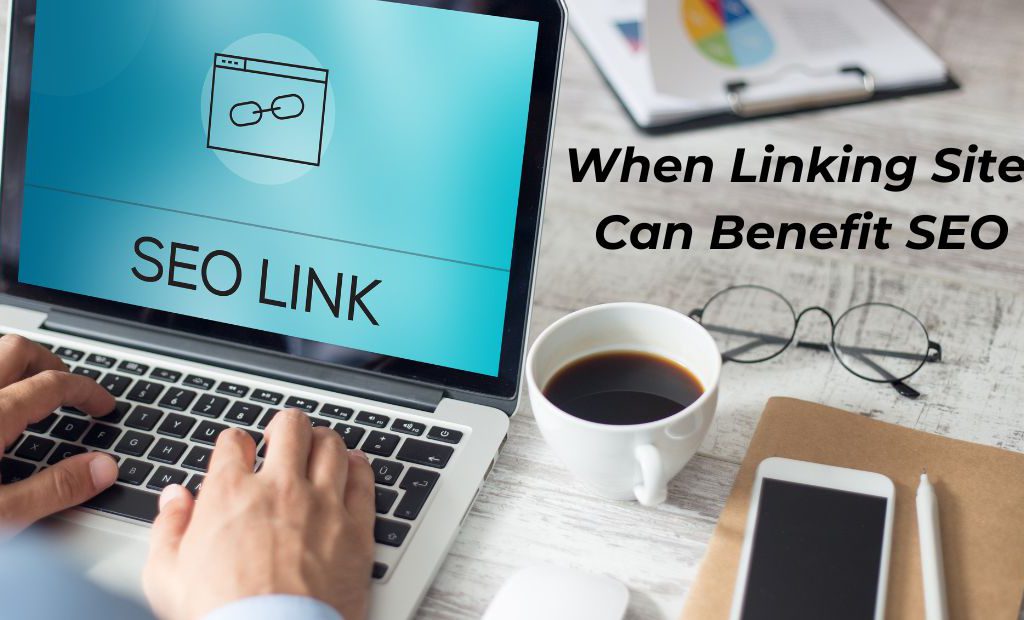As online businesses, portfolios, and brands grow, many website owners start wondering about the benefits of linking their multiple sites together. The question arises: Does linking all my sites help SEO? The simple answer is “it depends.” While internal linking between your sites can have potential benefits, it must be done with purpose and strategy to be effective. In this article, we’ll dive into the pros and cons, the right ways to approach it, and some common pitfalls to avoid.
Understanding Site Linking and SEO
Site linking, or “interlinking,” is when you connect different websites that you own by creating hyperlinks from one site to another. If you’re managing several websites within related niches, interlinking might seem like a good way to drive traffic across sites, share authority, and potentially boost SEO. However, it’s essential to understand how Google and other search engines view these links to avoid any penalties.
When Linking Sites Can Benefit SEO

1. Improved User Experience
If your sites are genuinely related and provide unique content or services, linking them can offer value to users. For example, if you have a blog about digital marketing and another site offering SEO tools, linking them can enhance the user experience by giving readers access to more relevant resources. Google values user-centric strategies, so when your interlinking improves the journey for users, it can indirectly contribute to SEO.
2. Boosted Domain Authority and Trust Flow
When done strategically, linking multiple sites you own can spread authority among them. If one site is already well-established, linking it to newer or less authoritative sites can help boost their credibility. However, Google evaluates the quality and relevance of each link, so only high-quality, relevant sites will benefit from this strategy.
3. Enhanced Indexing and Crawling
Google and other search engines rely on links to discover new pages. When you link your sites, you help search engines find, crawl, and index pages they might not otherwise reach, especially if your newer sites are struggling to get indexed. This strategy can speed up the indexing process, leading to faster visibility on search engine results pages (SERPs).
Potential Drawbacks of Linking All Your Sites
1. Risk of Manipulative Link Schemes
Google strictly penalizes “link schemes” intended to manipulate PageRank or artificially inflate a site’s authority. If you link your sites in a way that appears manipulative or excessive, you could face penalties, reducing your sites’ rankings and even leading to deindexing. Google may see a pattern where links are intended to manipulate rankings rather than provide genuine value.
2. Loss of Credibility
If your sites cover vastly different topics or niches, linking them may confuse users or even appear unprofessional. Imagine a visitor on a healthcare website suddenly finding a link to a car repair site; this may harm the credibility of both sites. Irrelevant interlinking can decrease user trust and lead to higher bounce rates, which can negatively impact SEO.
3. Limited SEO Value for Poorly Optimized Sites
If one or more of your sites are not well-optimized for SEO, linking them together can dilute the authority of your higher-quality sites. In such cases, linking poorly-performing sites with high-performing ones won’t necessarily boost SEO for either; instead, it may affect the credibility of your better-performing sites.
Best Practices for Linking Multiple Sites
If you’re set on linking your sites together, follow these best practices to ensure the links genuinely add value and align with SEO best practices.
1. Focus on Relevance and User Intent
Only link sites if they’re relevant to one another and serve a similar audience. For example, if you own sites related to health and wellness, like a fitness blog, a healthy recipe site, and a yoga training platform, these links can be meaningful and relevant. However, linking a finance blog with a gardening site offers no user value and can harm credibility.
2. Use Natural, Non-Overbearing Linking
Interlink your sites naturally, as if they were external resources you trust. Avoid overloading your pages with interlinks. Instead, include links where they’re contextually appropriate and likely to help readers find additional useful information.
3. Ensure High-Quality Content on All Linked Sites
Before linking any sites, ensure each one has high-quality content and is well-optimized. Linking low-quality sites can damage your high-quality sites’ SEO rather than help. Google values authority and quality, so linking sites with poor or thin content could reduce the SEO benefit of the connection.
4. Use the Right Anchor Text
Anchor text should be relevant, natural, and varied. Avoid keyword-stuffed anchor text that may appear manipulative. Google values contextually relevant and descriptive anchor text as it provides more information on the linked content’s relevance and value to the reader.
5. Consider Using “nofollow” When Appropriate
If you link to sites that may be less relevant, consider using the “nofollow” attribute to indicate that you’re not necessarily endorsing them for SEO purposes. This can prevent link equity from flowing to these sites, reducing the risk of Google viewing the links as manipulative.
When to Avoid Linking Multiple Sites
In certain situations, linking multiple sites may do more harm than good. Here are a few cases when linking should be avoided:
– Irrelevant Niches: If your sites cover unrelated niches, linking them can appear manipulative or confusing to users. Avoid linking just for the sake of SEO.
– Thin Content Sites: Sites with limited or low-quality content won’t benefit from SEO authority passed through links. Google could view this as an attempt to manipulate PageRank.
– Link Schemes: If you’re considering creating a network solely to link your sites together, this violates Google’s guidelines on link schemes. Avoid strategies that seem like “shortcuts” to ranking, as they often lead to penalties.
Common Pitfalls to Avoid
– Avoid Link Networks: Setting up a network of interconnected sites for the sole purpose of boosting SEO is a classic example of a link scheme. Google has heavily penalized such networks in the past.
– Avoid Exact-Match Anchor Text: Avoid linking with the same exact keyword repeatedly, as it can appear spammy and manipulative. Use diverse and natural language in anchor text.
– Don’t Overdo Internal Linking: Excessive linking between your sites can harm readability and user experience. Overuse of links can also dilute their value, making them less effective for SEO.
Alternatives to Linking All Sites
If linking sites feels risky or inappropriate for your business, consider these alternative strategies:
– Guest Posting on High-Authority Sites: Instead of linking your own sites, contribute to high-authority sites in your niche. This brings credibility, relevant traffic, and SEO value without risking penalties.
– Cross-Promote on Social Media: Use social media platforms to share content from your various sites, driving traffic without creating SEO links.
– Create Separate Brand Pages for Each Site: Rather than directly interlinking, consider creating a brand page or hub where you list your sites. This offers visibility without linking directly.
The Bottom Line: Does Linking All Sites Help SEO?
Linking all your sites can help SEO when done with care, focusing on user experience, relevance, and quality. If each site provides unique value, linking can improve user engagement, indexing, and, in certain cases, authority sharing. However, the risk of penalties or decreased credibility from manipulative linking can outweigh the benefits if you don’t approach it strategically.
Always consider the intent behind linking, ensuring each connection offers genuine value to users. When in doubt, consult with an SEO expert to develop a linking strategy that aligns with best SEO practices, maintains site credibility, and avoids potential penalties. By prioritizing user experience and organic SEO growth, you can make informed decisions about interlinking your sites effectively and safely.


Add a Comment